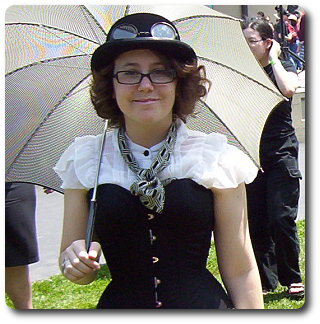Books: The Onion Girl – Charles de Lint
Charles de Lint has written sixty-seven books to date, he is nothing if not prolific. Ranging from collections of short-stories to full novels, almost all of them have helped to pioneer a growing area of fiction known as ‘urban fantasy.’ Like any genre, it’s a bit difficult to define, as every writer brings their own interpretation to it. Imagine, if you will, the dragons, fairies, and elves of high fantasy. Now put them in the nearest modern city and you'll have a fairly good approximation.
De Lint’s city of choice in about half of his books is Newford, a fictional North American town. Here a whole cast of characters reside each with their own past and problems. If you’ve ever read Terry Pratchett’s Discworld series, you’ll understand how this works. While there is a chronological sequence of events, there isn’t a first book to start with or a last one with which to end. After much fretting, I've decided to begin with the Onion Girl.
The story follows two girls trying to cope with terrible pasts that have left them hollow and unable to commit to relationships. Each of them tries to heal from their own secrets, until, finally, they come to collision, both in a magical world and the real one.
Jilly Coppercorn is the main character of the novel. At face value, she appears painfully trite; she is interminably good, has a dark past, and has a special magic, unlike the rest of humanity. However, she still manages to pique interest. The novel begins with Jilly victimized by a hit-and-run accident landing her in the hospital paralyzed. From there on out she spends most of her time asleep in a place called ‘the Dreamlands,’ a mysterious and magical world where she is whole and unharmed. Otherwise, she lies awake, bedridden while being visited by friends.
As a first time reader of de Lint, this was initially confusing to me, since just about everyone from every Newford book shows up to visit her. However, it was not overwhelming. What really started to become annoying was the recurrence of phrases that Jilly is fond of using. As she narrates she refers to herself as ‘the Onion Girl’ and ‘the Broken Girl’ every few sentences and the repetition becomes swiftly tiresome.
The other half of the novel follows a girl named Raylene Carter, who seems to be the polar opposite of Jilly. Like Jilly, she had a terrible childhood. But instead of eventually being able to work through these painful memories, she becomes violent to a world that was violent to her. It is a testament to de Lint’s writing ability that the reader never grows to dislike Raylene, but instead admires her survival and sympathizes with her plight.
The story rests somewhere in the mundanely magical. De Lint wavers between moments of genius and banality. In the end, the Onion Girl is a good, standard read; strong in imagination and eloquence. I recommend it to anyone who needs something different from typical high-fantasy.
About the Reviewer:
Lady Almira Inchcombe is presently serving on the all-female crew of the H.M.S. Chronabelle, an airship docked in the San Francisco Bay Area. She is acting Weapons Specialist, Event Planner, and Book Enthusiast. A couple of years ago, she became interested in this strange thing called ‘steampunk’ and the rest is history. In her spare time, she goes by the pseudonym of Tessa, and masquerades as a student.
